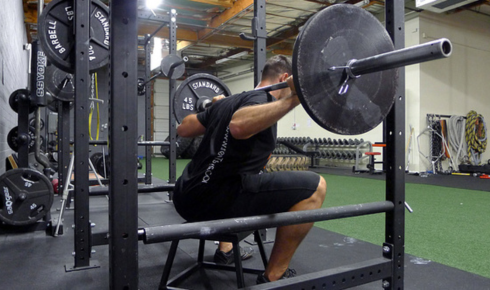
Muscle-activation trends in lower-body exercises help clarify how different lifts stimulate the glutes, quadriceps, hamstrings and adductors. Advances in surface electromyography (EMG) and biomechanical analysis have sharpened comparisons across movements and loading styles. Experts like Bret Contreras—a personal trainer, strength coach and fitness teacher—point to these patterns as useful inputs for targeted programming to improve recruitment, address imbalances and support performance or rehabilitation.
These data inform how coaches structure training for sport, injury prevention and muscular development. Knowing how muscles behave across planes and load vectors enables more precise, goal-directed exercise selection.
Load vector and joint angle
Direction of load and joint position strongly influence activation. Vertically loaded patterns such as squats and lunges tend to recruit both quadriceps and glutes, with relative emphasis shifting as depth and torso angle change. Horizontally biased hip-extension tasks (for example, hip thrusts, bridges) often show peak gluteus maximus activity near terminal hip extension. These differences matter when prioritizing a region and the phase of the range of motion being targeted.
Quadriceps-dominant work
Barbell back squats, front squats, leg presses and step-ups typically produce high quadriceps activation, especially with upright torsos and deeper knee flexion. Back squats create substantial concurrent demand on the glutes when the hip crease drops below the knee, while front squats shift relatively more to the quadriceps and trunk due to anterior load placement. Technique—controlled descent, firm bracing—supports engagement and reduces compensations.
Glute-dominant work
Hip thrusts, bridges, cable pull-throughs and Romanian deadlifts target hip extension. Across comparative EMG studies, hip thrusts frequently show high gluteus maximus activation—particularly near lockout—though “highest EMG” does not automatically mean superior strength or hypertrophy outcomes. Romanian deadlifts also load the glutes, with greater hamstring contribution given the extended-knee, hinge emphasis and long eccentric.
Hamstrings and the hip hinge
Hip-hinge movements (Romanian deadlifts, good mornings, glute-ham raises) elicit substantial hamstring activation, especially with minimal knee flexion and slower eccentrics. Because these patterns lengthen the posterior chain under tension, they are staples for posterior development and as part of hamstring-injury reduction strategies in sprint sports.
Adductors, abductors and single-leg control
Unilateral and lateral patterns (lateral lunges, step-ups, Bulgarian split squats) increase adductor demand for frontal-plane control. Banded side steps and clamshells bias the gluteus medius/minimus to resist internal rotation and dynamic valgus. Single-leg work exposes side-to-side differences and shifts stabilization from passive structures to active muscle control—useful in both prehab/rehab and field-sport conditioning.
Dynamic and plyometric tasks
Plyometrics (jump squats, bounds, skater hops) produce rapid, coordinated recruitment across the lower body. Although EMG can be variable in fast tasks, common trends include elevated glute and calf involvement during takeoff/landing and high quadriceps demand during loading. Because deceleration is eccentric-heavy, athletes who show valgus collapse or poor trunk control often benefit from adjunct hip-abductor/hip-extensor strengthening.
Fatigue, compensation and shifting patterns
Activation patterns shift under fatigue. If glute contribution fades during high-rep squats or lunges, work may drift to lumbar extensors or hamstrings, increasing compensation risk. Monitoring technique and tempo, and managing set/rep schemes and rest, helps preserve quality as sessions progress. Fitness professionals like Bret Contreras have underscored that intentional hip drive and focused glute contraction during hip-dominant work help prevent substituting lumbar extensors or quadriceps when fatigue sets in.
Programming implications
Activation trends guide exercise choice to match goals. For hypertrophy, choose patterns that place consistent, controllable tension on the target region across the range. For speed and acceleration, include tasks whose force direction and joint angles resemble the sport (for example, pairing vertical patterns with horizontal hip-extension work). Blending movement types reduces imbalances and supports joint health while improving the likelihood that strength carries over to performance.
Lower-body EMG and biomechanics show that different lifts engage target muscles in distinct ways—and at distinct points in the range. Using those patterns to align movements with outcomes (strength, stability, hypertrophy or return to play) makes programming more effective, balanced and sustainable.



